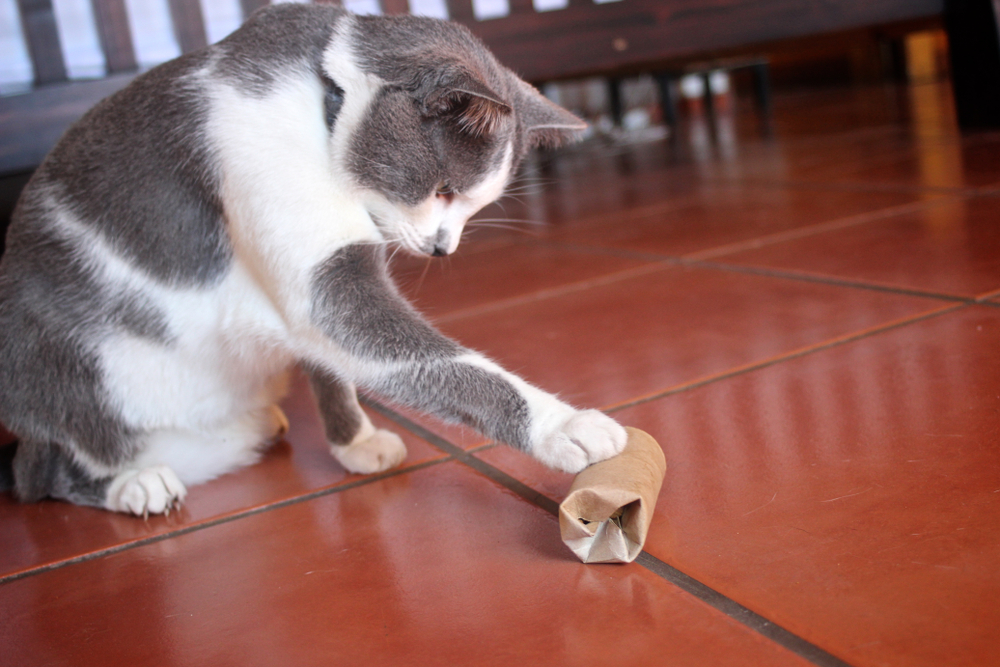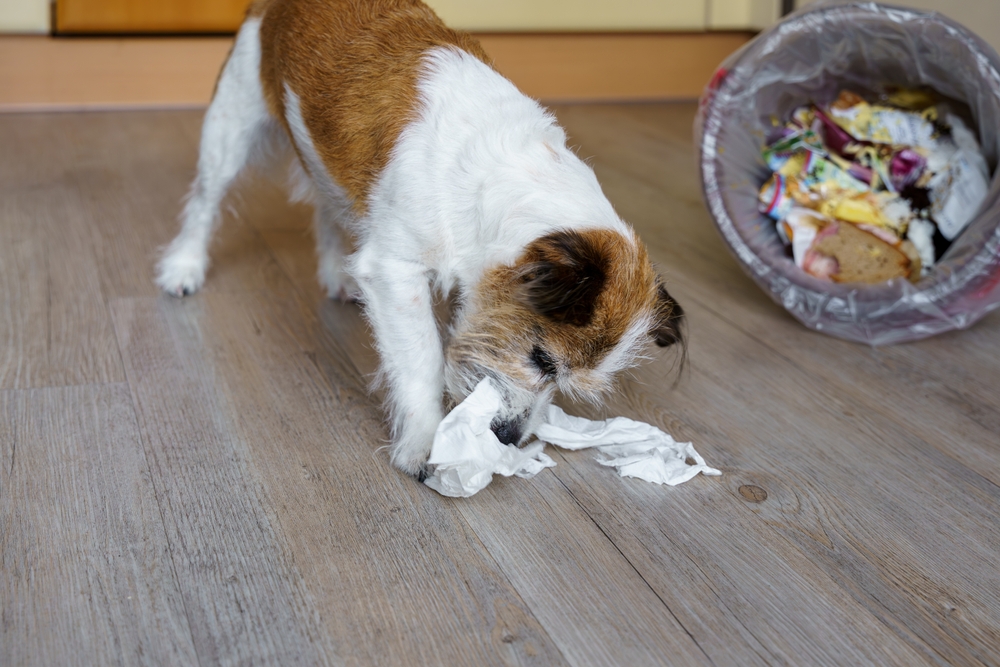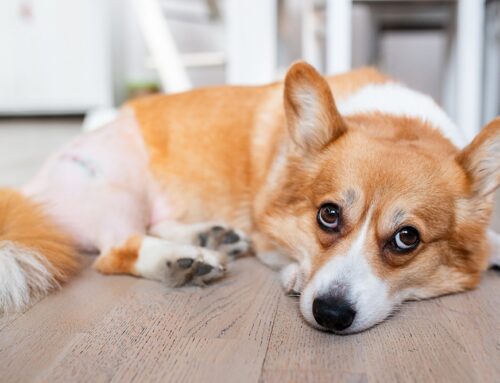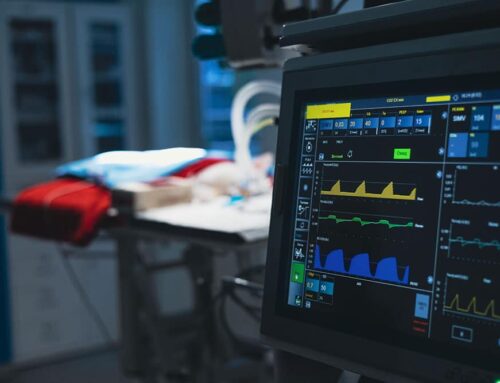From Toy to Trouble: How Swallowed Objects Become Veterinary Emergencies
Your pet ate something they shouldn’t have – what now? A sock disappears from the laundry, a pacifier vanishes from the floor, or the dog swipes a kebab from the counter. Families often wonder: is this just a stomach upset, or the start of something serious? The truth is that foreign bodies can be minor or life-threatening, and it is rarely clear at the start.
At Omega Veterinary Group, we treat these emergencies every day. Sometimes objects pass safely. Other times they require surgery, days of hospitalization, or even removal of part of the intestine. Knowing when to worry and moving quickly can make all the difference.
When to Suspect a Foreign Body
Early signs are often easy to miss. A dog may vomit once and still act playful, or a cat may skip a meal but otherwise seem normal. The warning sign is persistence: repeated vomiting, ongoing retching, straining without stool, or sudden lethargy point to more than a simple upset stomach.
Types of Obstructions
An obstruction occurs when the swallowed object can no longer move normally through the stomach or intestines, usually due to size. If the object is large enough, and stays in place long enough, it can also cut off blood supply to the area- called “devitalization”.
Complete obstruction. Nothing can pass beyond the object. Pets dehydrate quickly and deteriorate without intervention.
Partial obstruction. Small amounts of fluid or food can move around the object, leading to intermittent vomiting and weight loss that can be mistaken for a mild problem.
Linear obstruction. Objects like ribbon, dental floss, or string can catch under the tongue or in the stomach while the rest threads into the intestines. This causes the bowel to plicate, or accordion, and risks tearing.
Gastrointestinal foreign body obstruction in dogs and cats can progress quickly when tension and pressure cut off blood supply, which is why visiting the vet promptly is so critical.
Why Minutes Matter
An object that could have been vomited up in the ER may, within hours, require anesthesia and endoscopy. Wait longer, and it may demand a gastrotomy or even an intestinal resection and anastomosis if tissue becomes damaged. Acting quickly can mean the difference between going home the same day or facing surgery, days in the ICU, and higher risks of complications. Prompt treatment gives pets the best chance for a smooth recovery.
The type of object swallowed also plays a role. String, toys, and food packaging can be hazardous even when they look harmless. Corncobs are notorious for blocking intestines and often require major surgery. Magnets can keep pets in the ICU for days. A few pennies may leach zinc and cause poisoning. Even food can be dangerous – a kebab skewer can puncture the stomach and migrate to other parts of the body.
How Foreign Body Obstructions Are Diagnosed
The first step in the ER is stabilization: fluids, pain control, and assessment of hydration and vital signs. Exam findings such as string under the tongue or a painful abdomen raise suspicion. Abdominal radiographs often show dilated loops of intestine and gas patterns consistent with obstruction, and sometimes show the object itself. Ultrasound can identify the point of the blockage more closely, evaluate the intestinal wall, and detect compromised blood flow.
Laboratory testing provides baseline information on electrolytes and organ function, which guides anesthesia and fluid therapy. Other tests may also be recommended, like Parvovirus testing or biopsy of the stomach and intestines, to rule out other potential causes of your pet’s symptoms. At Omega, criticalists oversee care across services, ensuring that imaging, lab work, and surgery are coordinated seamlessly amongst experienced specialist teams.
Treatment Options
Omegas offers the full range of treatment options, from conservative to critical care.
Vomiting and Monitoring
If ingestion was recent (within a few hours) and the object is small and smooth, inducing vomiting may be possible under supervision. Some pets can pass small items with careful hospitalization, fluids, and repeat imaging.
Endoscopy
Objects located in the esophagus, stomach, or upper small intestine can sometimes be retrieved under anesthesia with a flexible scope. Endoscopic procedures can remove some objects without the need for an abdominal incision, reducing pain and recovery time when the case is appropriate.
Surgery
When obstruction is established or the object is not reachable by endoscopy, surgery is required.
- Gastrotomy involves opening the stomach to remove the object.
- Enterotomy allows removal from the small intestine.
- Resection and anastomosis is needed if the intestine is devitalized or perforated, requiring removal of the damaged segment and reconnection of healthy ends.
Surgery can be straightforward, but it can also be complex and high risk. At Omega, board-certified surgeons and criticalists work together so anesthesia, surgical technique, and monitoring are optimized.
The Role of the ICU
Surgery is only one step. Recovery depends on advanced postoperative care. Emergency and critical care saves lives by supporting cardiovascular stability, pain control, and gastrointestinal function in the crucial hours after intervention. This is especially important for pets who have damaged tissues, and who needed a resection and anastomosis.
In the ICU, patients receive:
- Tailored pain management protocols
- IV fluids and electrolytes to restore balance
- Anti-nausea and gastrointestinal protectants
- Continuous monitoring of heart rate, blood pressure, and oxygen levels
Dogs and cats are encouraged to begin eating early when safe, because nutrition supports intestinal healing and motility.
Possible Complications
Foreign body surgery is often lifesaving, but it is not without risks. When the intestines are opened or damaged tissue is removed, healing can be unpredictable. Even with excellent surgical technique and critical care, complications may develop:
- Suture breakdown and leakage can spill intestinal contents into the abdomen, leading to life-threatening infection called peritonitis.
- Sluggish intestinal movement (ileus) may prevent food from moving normally for several days, causing ongoing nausea and vomiting.
- Septic peritonitis can occur if the intestine perforates before or after surgery, releasing bacteria and toxins into the abdominal cavity.
- Short bowel syndrome may result if large sections of intestine must be removed, leaving less surface area to absorb nutrients.
- Aspiration pneumonia can develop in pets that vomit repeatedly before treatment, when stomach contents enter the lungs and cause infection.
Because these problems can appear suddenly, patients remain in the ICU under continuous monitoring until their appetite, comfort, and stability are reliably restored.
Home Care After Surgery
Recovery continues at home with careful restrictions and monitoring- and a cone.
Activity. This is a major abdominal surgery- pets need strict rest, and crate confinement helps prevent incision strain. Always keep other pets away, to avoid both excitement and the other pet licking the incision.
- Cats recover best in a crate or small, quiet room set up with litter, food, and resting spots that don’t require any vertical movement- no cat trees! Cat litter should be shredded or pelleted paper to avoid dust or bits of litter sticking to an incision.
- Dogs can go on short, slow leash walks for bathroom breaks, but only long enough for the business to be done. If you cannot crate your dog, then keep them on a short leash attached to you or a safe object near you (close enough to intervene quickly if they become tangled).
Incision care. Daily checks for redness, swelling, or discharge are essential. A small amount of swelling and a few drops of red-tinged or clear discharge is normal for the first couple of days but should resolve quickly- if it worsens, it should be checked out.
Cones are critical for prevention of complications and should extend at least 2 inches past your pet’s nose. It’s ok to remove it for short periods of time if your pet is struggling to eat or drink with it on, but the cone needs to be replaced promptly afterward and should never be left off if your pet is unsupervised.
Feeding. Small, frequent meals of a bland or easily digestible diet are often recommended before transitioning back to normal food. Don’t give any treats, new foods, or chews without clearing it with your veterinarian first.
Enrichment. Many pets ingest objects out of boredom. Brain games for dogs and mental stimulation for cats provide safe entertainment during recovery. Puzzle toys, bird feeders, snuffle mats, and short training sessions can also help your pet survive crate rest.
How do I keep this from happening again?
Prevention. Adjusting the home environment to limit access to risky items is critical. Household strategies such as securing trash, storing laundry, and selecting safer toys reduce the risk of recurrence.
Training. Teach the cue “leave it” or “drop it”. Some pets will be at risk their whole life, regardless of knowing “leave it”. A basket muzzle can be a literal life-saver for these pets.
Planning. Sometimes it happens, no matter how hard we try. Because emergencies are costly, a pet emergency savings account and pet insurance can make decisions easier when timing is urgent. Omega also accepts common veterinary payment plans.

Why Omega for Foreign Body Emergencies
When your pet eats something they shouldn’t, you want to know they are in the very best hands. At Omega Veterinary Group, your pet’s care is always guided by a critical care specialist who sees the big picture and coordinates every step – from diagnosis to surgery to recovery. Our team brings together advanced technology, 24/7 ICU monitoring, and seamless collaboration between specialists so nothing is left to chance.
If you’re worried your dog or cat may have swallowed something dangerous, please call us at 650-781-4239 or come straight to 251 N. Amphlett Blvd, San Mateo, CA 94401. We are open around the clock, every day, and our emergency team is ready to help your pet get safely back home where they belong.







Leave A Comment